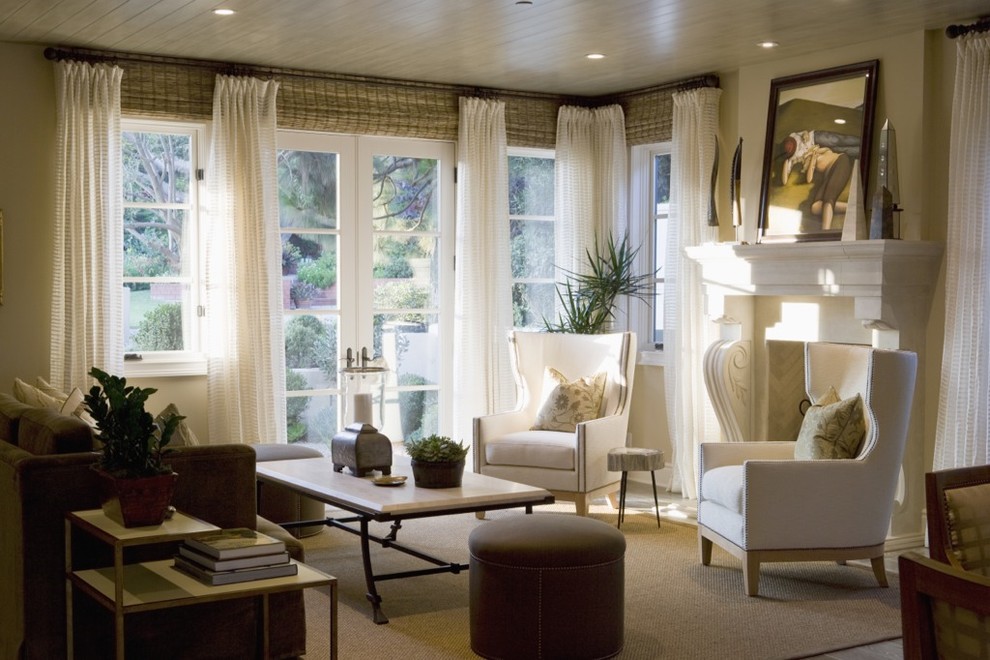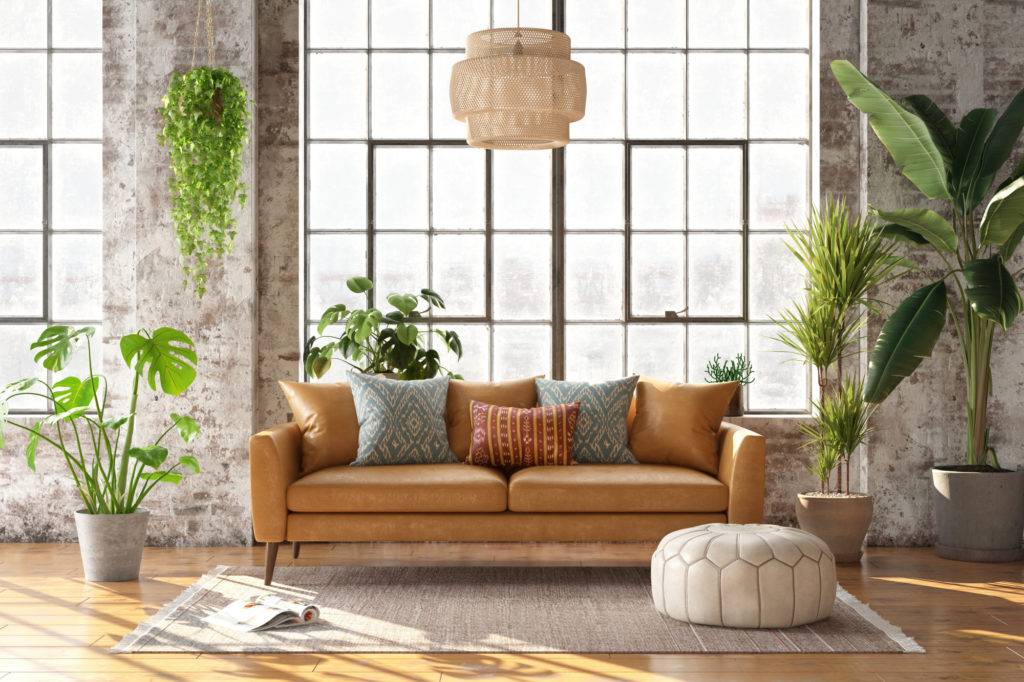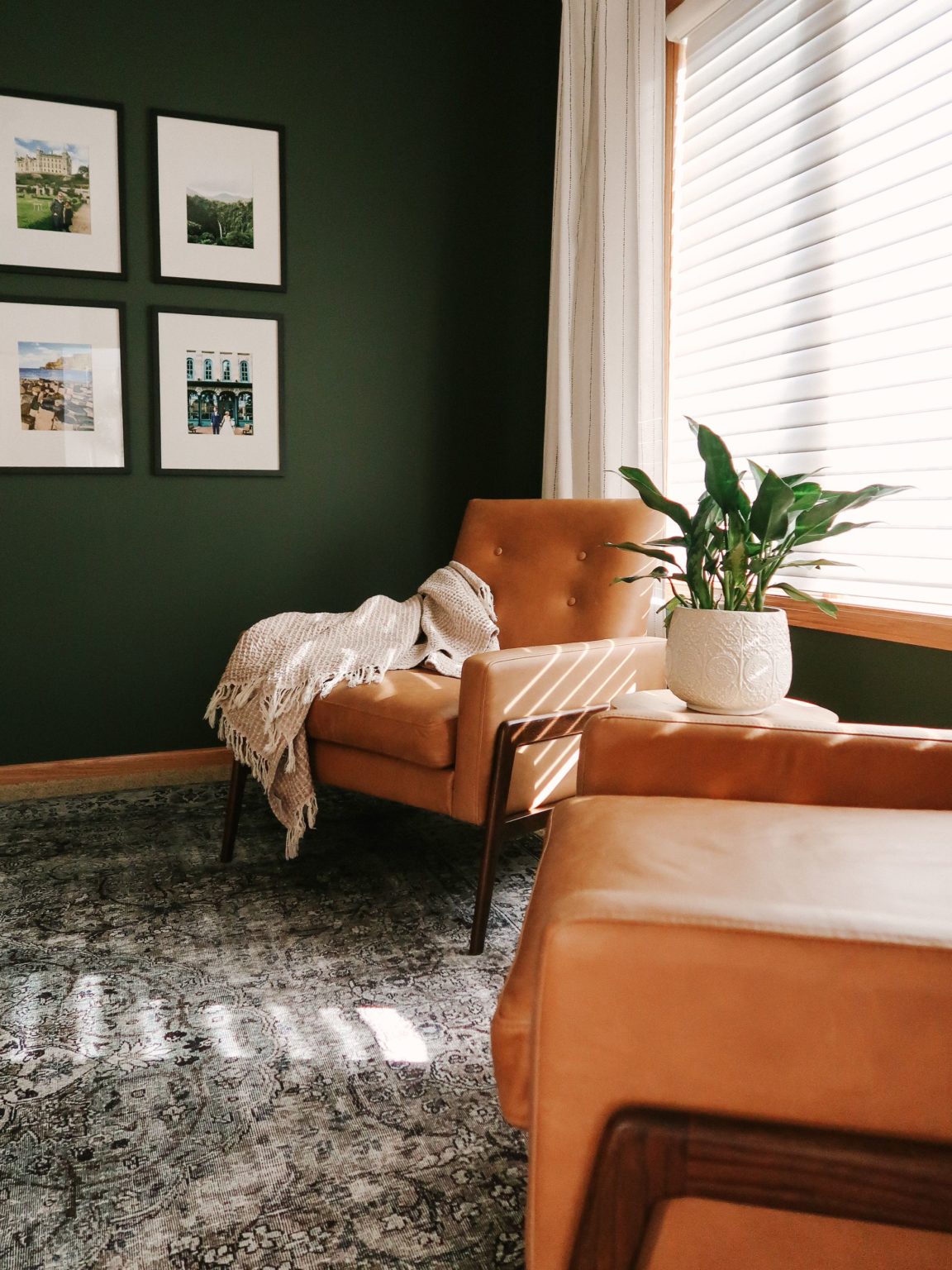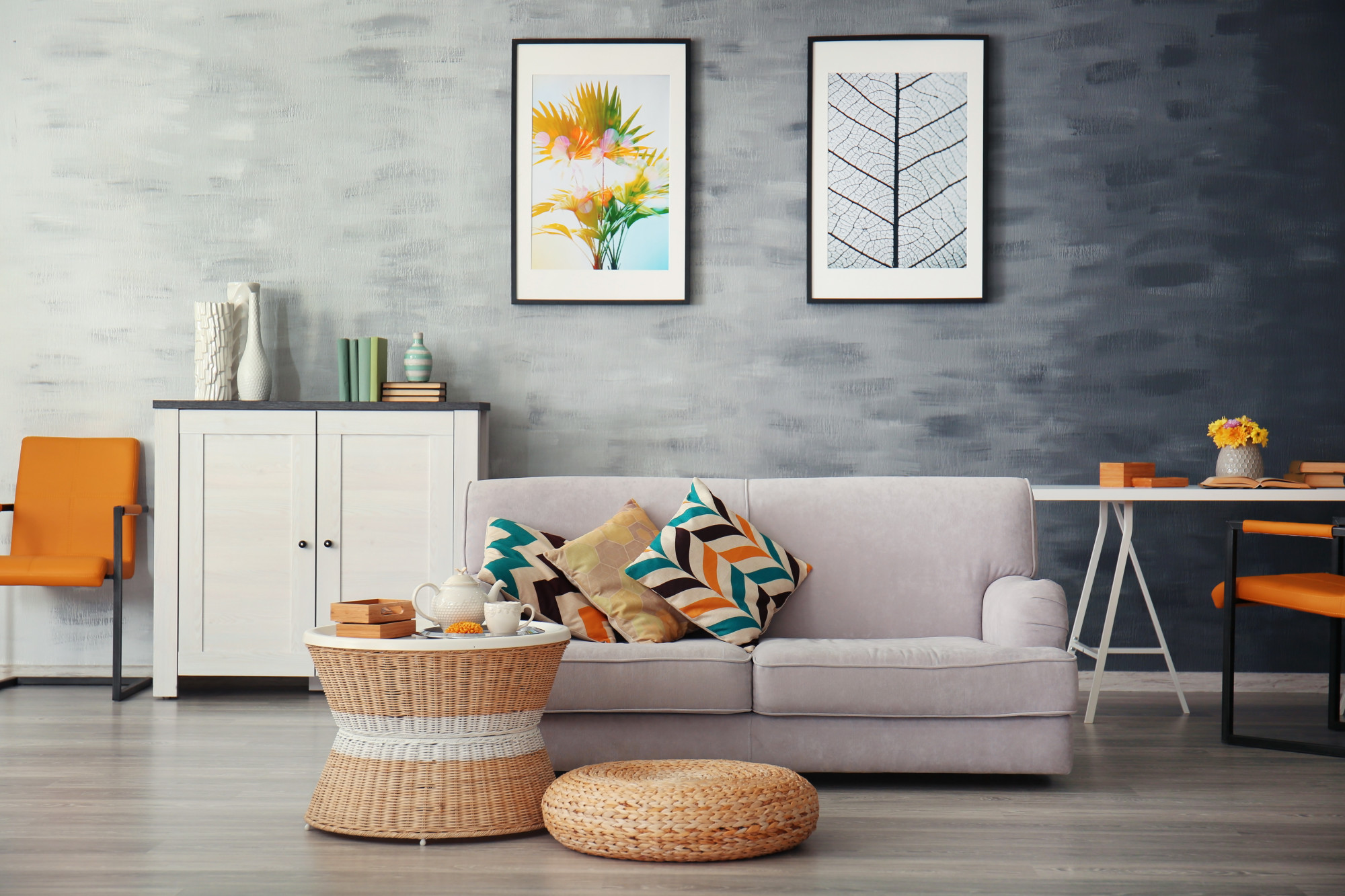North Facing Living Rooms: Pros and Cons
North facing living rooms are known for their cool and calm atmosphere. The lack of direct sunlight makes them perfect for those who want a peaceful and relaxing space. However, there are pros and cons to having a north facing living room.
Pros: One of the biggest advantages of a north facing living room is the even lighting it provides. The lack of direct sunlight means that there are no harsh shadows or glares, making it an ideal space for reading or watching TV. It also saves on energy costs as there is no need for air conditioning to combat the sun's heat.
Cons: The lack of natural light can make a north facing living room feel dark and gloomy, especially during the winter months. This can make it difficult to grow plants or keep them alive in this space. It may also require more artificial lighting to brighten up the room.
How to Maximize Natural Light in Your Living Room
Whether your living room faces north, south, east, or west, there are ways to maximize the natural light in your space. Here are some tips to help you make the most of your living room's sun orientation:
Choose light-colored walls: Light colors reflect natural light, making the room appear brighter and more spacious. Opt for off-white or light grey walls to enhance the natural light in your living room.
Use sheer curtains: If your living room faces the sun, consider using sheer curtains instead of heavy drapes. This will allow natural light to filter through while still providing some privacy.
Hang mirrors: Mirrors can reflect natural light and make the room appear brighter. Place them strategically across from windows or on walls adjacent to windows to maximize their effect.
Keep windows clean: Dirty windows can block or reduce the amount of natural light entering your living room. Be sure to clean them regularly to make the most of the sunlight.
South Facing Living Rooms: Pros and Cons
South facing living rooms are known for their warm and bright atmosphere. They receive direct sunlight throughout the day, making them perfect for those who enjoy natural light. However, there are pros and cons to having a south facing living room.
Pros: The biggest advantage of a south facing living room is the abundance of natural light it provides. This makes the space feel warm and inviting, and can even help with mood and productivity. It also allows for easier plant growth and maintenance.
Cons: The direct sunlight can cause glare and heat, making it difficult to enjoy the space during the hottest parts of the day. It may also require more energy to cool the room, leading to higher energy costs.
East Facing Living Rooms: Pros and Cons
East facing living rooms receive direct sunlight in the morning, making them perfect for early risers. This sun orientation has its own set of pros and cons.
Pros: The morning sunlight in an east facing living room can be energizing and invigorating. It also allows for easy plant growth and maintenance, as they will receive plenty of sunlight in the morning.
Cons: The direct sunlight in the morning can cause glare and heat, making it difficult to enjoy the space during that time. It may also require more energy to cool the room, leading to higher energy costs.
West Facing Living Rooms: Pros and Cons
West facing living rooms receive direct sunlight in the afternoon, making them perfect for those who enjoy natural light in the later part of the day. However, this sun orientation also has its own set of pros and cons.
Pros: The afternoon sunlight in a west facing living room can create a warm and cozy atmosphere. It is also a great time to enjoy the space, as the sun is not as harsh as it is in the earlier part of the day.
Cons: The direct sunlight in the afternoon can still cause glare and heat, making it difficult to enjoy the space during that time. It may also require more energy to cool the room, leading to higher energy costs.
How to Choose the Best Window Treatments for Your Living Room
Choosing the right window treatments for your living room can make a big difference in the overall look and feel of the space. Here are some tips to help you make the best choice:
Consider the sun orientation: The direction your living room faces will play a role in the type of window treatments you choose. For south facing windows, consider using blinds or shades to control the amount of sunlight entering the room. For north facing windows, opt for sheer curtains to maximize natural light.
Think about the style: Window treatments can add to the overall aesthetic of your living room. Consider the style and color scheme of your space when choosing window treatments to ensure they complement the room.
Keep functionality in mind: Window treatments not only add to the look of a room but also serve a purpose. Consider how much privacy and light control you want in your living room when selecting window treatments.
How to Arrange Furniture in a Living Room with Natural Light
Furniture placement can greatly affect the amount of natural light in your living room. Here are some tips for arranging furniture in a way that maximizes natural light:
Avoid blocking windows: Placing furniture in front of windows can block natural light from entering the room. Instead, position furniture at an angle or to the side of windows to allow light to filter through.
Use light-colored furniture: Dark furniture can absorb natural light, making the room appear darker. Opt for light-colored furniture to reflect light and brighten up the space.
Consider using mirrors: As mentioned earlier, mirrors can reflect natural light and make the room appear brighter. Place them strategically across from windows or on walls adjacent to windows to maximize their effect.
How to Use Mirrors to Enhance Natural Light in Your Living Room
Mirrors are a great way to enhance natural light in your living room. Here are some tips for using mirrors to brighten up your space:
Hang mirrors on opposite walls: By hanging mirrors on opposite walls, you create the illusion of more natural light in the room.
Place mirrors next to or across from windows: This will allow natural light to reflect off the mirror and into the room, making it appear brighter.
Use mirrors as a focal point: Mirrors can also serve as a beautiful focal point in a room while also adding to the overall brightness.
How to Incorporate Plants into Your Living Room for Natural Sunlight
Plants not only add a touch of nature to a living room, but they can also help enhance natural light. Here are some tips for incorporating plants into your living room for maximum sunlight:
Choose plants that thrive in your living room's sun orientation: Some plants require more sunlight than others. Choose plants that are suited to the sun exposure in your living room to ensure they will thrive.
Place plants near windows: Placing plants near windows will allow them to receive the most natural light possible.
Use hanging plants: If your living room has limited space near windows, consider using hanging plants to bring in some greenery and natural light.
How to Use Paint Colors to Brighten a Dark Living Room
If your living room lacks natural light, using the right paint colors can help brighten it up. Here are some tips for choosing the best paint colors for a dark living room:
Opt for light, neutral colors: Light and neutral colors reflect light, making a room appear brighter. Avoid dark colors that can absorb light and make the space feel darker.
Consider using an accent wall: Painting one wall a lighter color can help bounce light around the room and make it feel more spacious and bright.
Use a high-gloss finish: A high-gloss finish on walls can reflect light and make the room appear brighter. Just be sure to choose a color that complements the rest of the space.
The Importance of Living Room Sun Orientation in House Design

The Benefits of Proper Sun Orientation in the Living Room
 When designing a house, one of the key factors to consider is the
sun orientation
. This refers to the direction in which the sun shines into a room. The living room, being one of the most frequently used spaces in a house, is an important area to focus on when it comes to
sun orientation
. The
sun orientation
of the living room can significantly affect the overall design and feel of the house, making it a crucial aspect to consider. In this article, we will explore the benefits of proper
sun orientation
in the living room and how it can enhance your house design.
When designing a house, one of the key factors to consider is the
sun orientation
. This refers to the direction in which the sun shines into a room. The living room, being one of the most frequently used spaces in a house, is an important area to focus on when it comes to
sun orientation
. The
sun orientation
of the living room can significantly affect the overall design and feel of the house, making it a crucial aspect to consider. In this article, we will explore the benefits of proper
sun orientation
in the living room and how it can enhance your house design.
Maximizing Natural Light
 One of the main advantages of having proper
sun orientation
in the living room is the
maximization of natural light
. Natural light has numerous benefits, not only for our physical health but also for our mental well-being. It can make a space feel brighter, more spacious, and inviting. When the living room is positioned to receive ample sunlight, it can create a warm and cozy atmosphere, making it the perfect place to relax and unwind. Moreover,
maximizing natural light
can also save on energy costs, as it reduces the need for artificial lighting during the day.
One of the main advantages of having proper
sun orientation
in the living room is the
maximization of natural light
. Natural light has numerous benefits, not only for our physical health but also for our mental well-being. It can make a space feel brighter, more spacious, and inviting. When the living room is positioned to receive ample sunlight, it can create a warm and cozy atmosphere, making it the perfect place to relax and unwind. Moreover,
maximizing natural light
can also save on energy costs, as it reduces the need for artificial lighting during the day.
Energy Efficiency
 Proper
sun orientation
in the living room can also contribute to
energy efficiency
in the house. By strategically positioning windows and doors, you can take advantage of natural light and heat from the sun to warm up the living room during colder months. This can help reduce the use of heating systems, resulting in lower energy bills. On the other hand, during summer, having windows and doors that can be opened to let in a breeze can help cool down the living room without the need for air conditioning.
Proper
sun orientation
in the living room can also contribute to
energy efficiency
in the house. By strategically positioning windows and doors, you can take advantage of natural light and heat from the sun to warm up the living room during colder months. This can help reduce the use of heating systems, resulting in lower energy bills. On the other hand, during summer, having windows and doors that can be opened to let in a breeze can help cool down the living room without the need for air conditioning.
Improved Aesthetic Appeal
 In addition to the practical benefits, proper
sun orientation
in the living room can also enhance the aesthetic appeal of the space. When natural light shines into a room, it can highlight its features and textures, making it look more aesthetically pleasing. This is especially important for living rooms that serve as the main gathering and entertaining area in a house. With the right
sun orientation
, you can create a visually appealing living room that will impress your guests and make you feel proud of your house design.
In conclusion, the
sun orientation
of the living room plays a vital role in house design. By maximizing natural light, improving energy efficiency, and enhancing aesthetic appeal, proper
sun orientation
can greatly improve the overall look and feel of a house. As such, it is essential to carefully consider
sun orientation
when designing your living room to create a comfortable, inviting, and energy-efficient space.
In addition to the practical benefits, proper
sun orientation
in the living room can also enhance the aesthetic appeal of the space. When natural light shines into a room, it can highlight its features and textures, making it look more aesthetically pleasing. This is especially important for living rooms that serve as the main gathering and entertaining area in a house. With the right
sun orientation
, you can create a visually appealing living room that will impress your guests and make you feel proud of your house design.
In conclusion, the
sun orientation
of the living room plays a vital role in house design. By maximizing natural light, improving energy efficiency, and enhancing aesthetic appeal, proper
sun orientation
can greatly improve the overall look and feel of a house. As such, it is essential to carefully consider
sun orientation
when designing your living room to create a comfortable, inviting, and energy-efficient space.





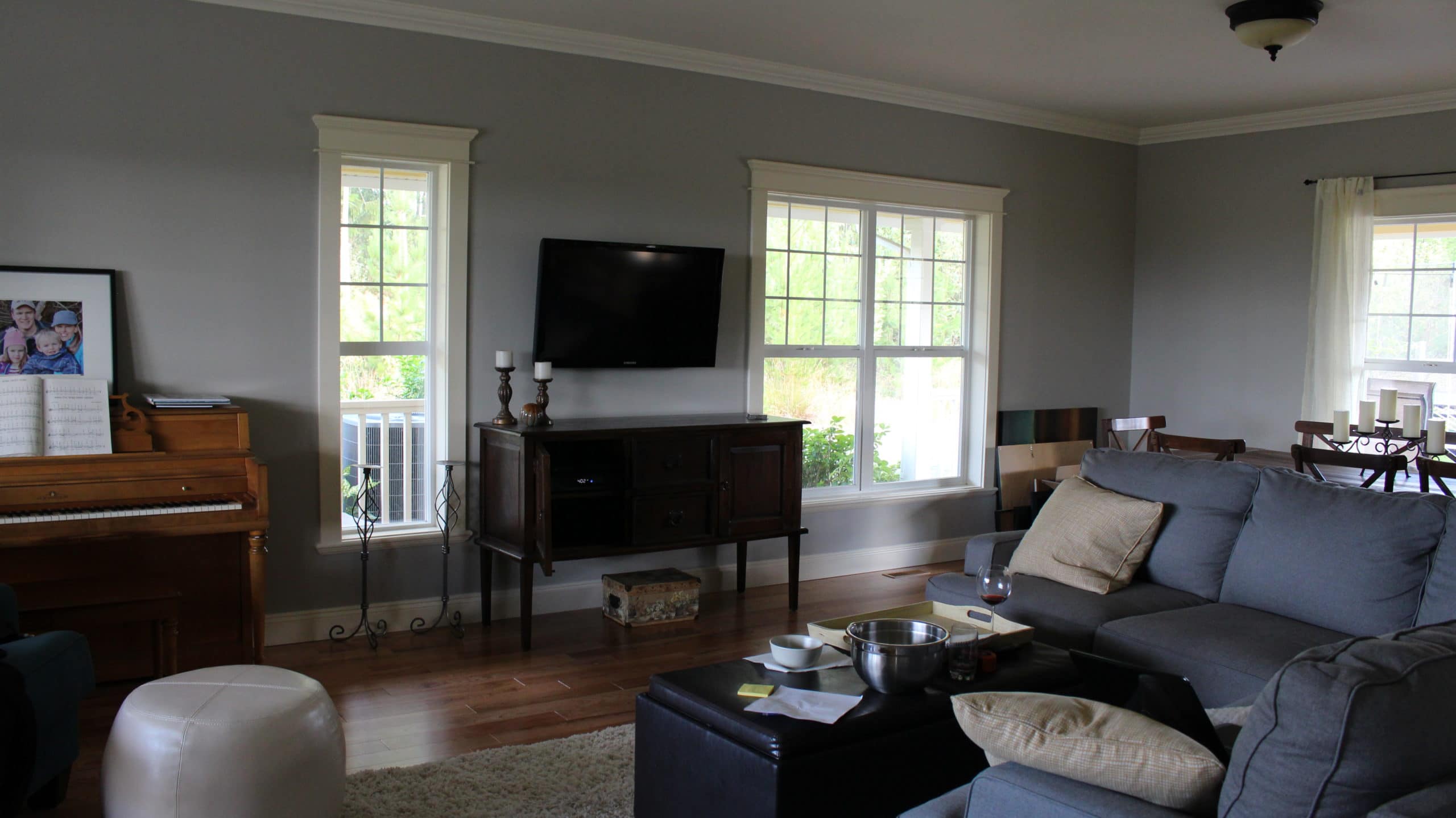















































/GettyImages-1156011692-dd3354f984884054adec618e43903f8a.jpg)












:max_bytes(150000):strip_icc()/2019-11-06_StudioMunroe_BAMV-0288-Edit_LRG-6f4a5e025ed749adb01bcfae8d78dea8.jpg)



